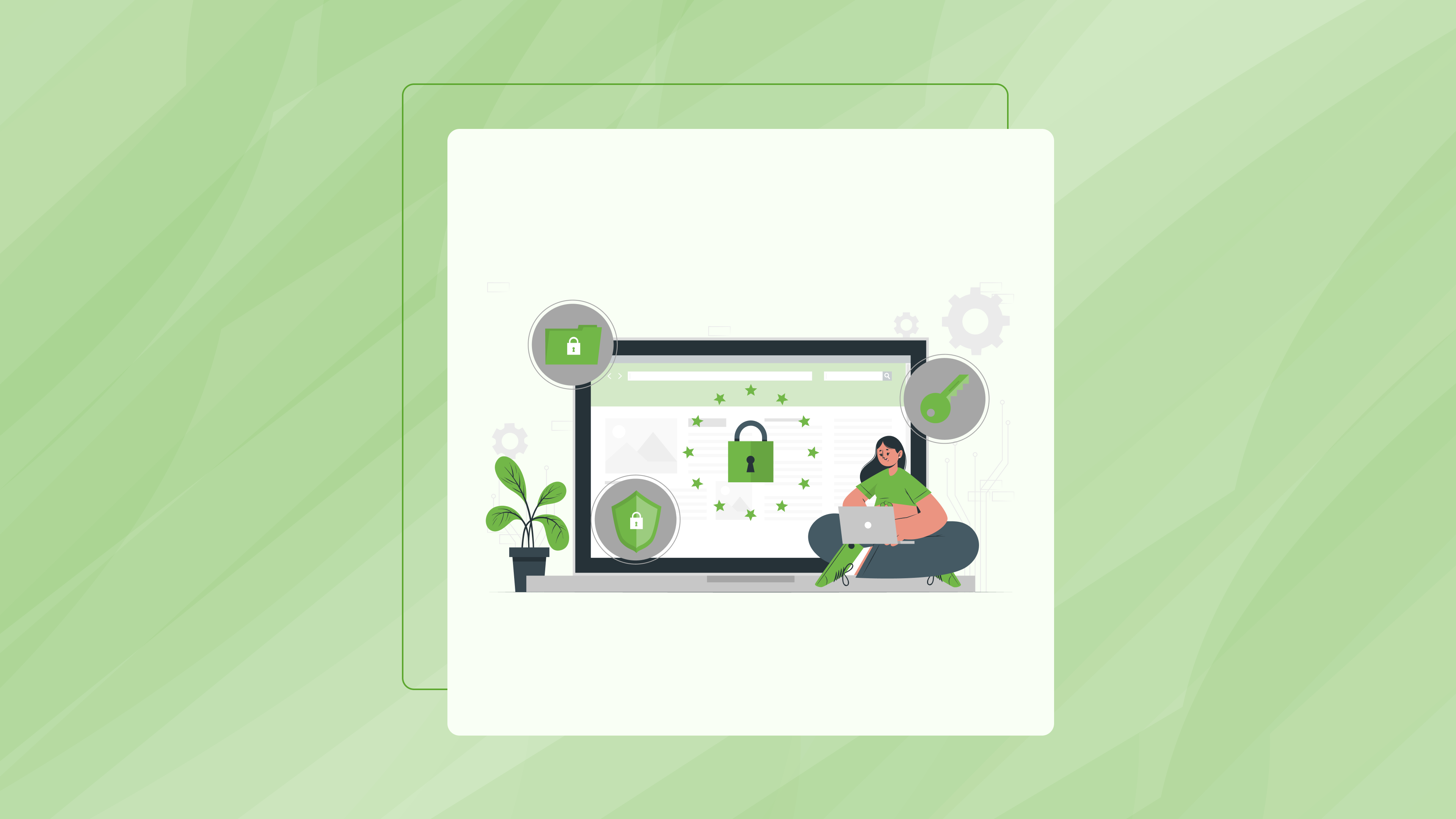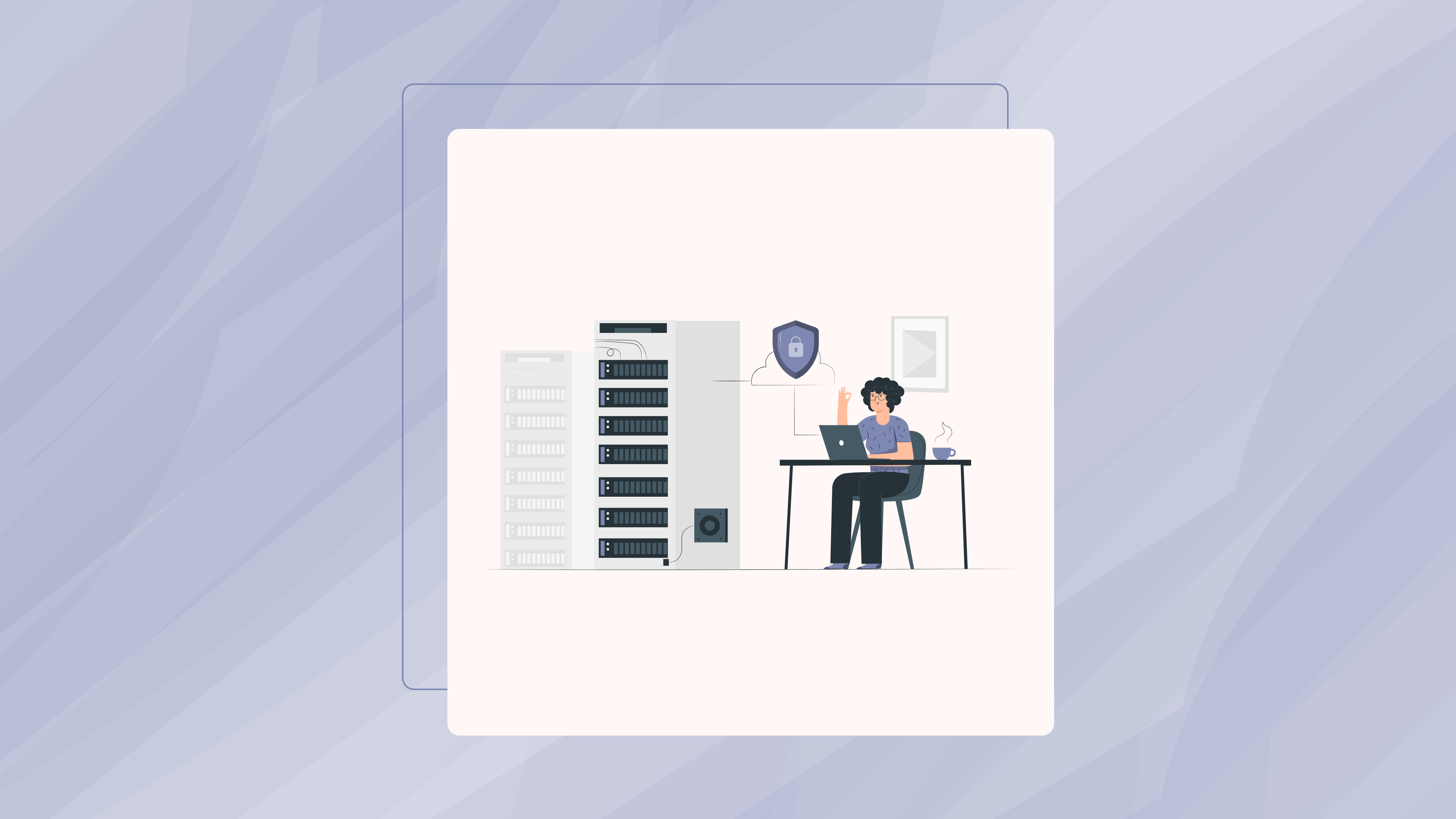BlockChain
How Does Blockchain Secure Credentials?
How Does Blockchain Secure Credentials?
How Does Blockchain Secure Credentials?
How Does Blockchain Secure Credentials?
Oct 22, 2024



Data security and transparency have become increasingly important, especially when it comes to managing and verifying credentials such as academic degrees, professional certifications, and identity documents. With the rise of blockchain technology, organizations and institutions are turning to this innovative solution to securely manage and verify credentials. Blockchain not only enhances the security and authenticity of digital records but also ensures that credentials are tamper-proof and easily verifiable.
In this blog, we will explore how blockchain technology secures credentials, the key benefits it offers, and how it is transforming the way we store, manage, and verify sensitive information in a digital world.
What is Blockchain?
Before we dive into how blockchain secures credentials, it’s important to understand what blockchain technology is.
Blockchain is a distributed, decentralized digital ledger that records transactions across multiple computers in a way that ensures the data is secure, transparent, and immutable. Unlike traditional databases, which rely on a central authority, blockchain operates on a peer-to-peer network where information is validated and stored by multiple participants (known as nodes). This structure makes it nearly impossible to alter or tamper with any data stored on the blockchain without consensus from the network.
In simple terms, blockchain allows for the creation of a trustworthy and permanent record of transactions, data, or information without the need for intermediaries or centralized control.
How Blockchain Secures Credentials
Blockchain is revolutionizing the way credentials are issued, verified, and stored by providing a secure and immutable platform for managing digital records. Here’s how blockchain ensures the security of credentials:
1. Immutability of Data
One of the core features of blockchain is immutability—once a piece of data is recorded on the blockchain, it cannot be altered or deleted. This ensures that credentials, once issued and stored, remain tamper-proof. Any attempt to modify or forge a credential would require altering every copy of the distributed ledger, which is virtually impossible in a well-constructed blockchain network.
For example, if a university issues a degree to a student via blockchain, that credential is permanently stored, and no one can modify or falsify the record.
2. Decentralization
Blockchain operates on a decentralized network, meaning no single entity controls the system. This makes the process of credential verification more secure because there is no central point of failure. With a decentralized approach, it’s extremely difficult for hackers to compromise or alter data since it is distributed across multiple nodes.
For instance, a blockchain credential stored across multiple nodes globally reduces the risk of hacking or unauthorized access compared to traditional centralized systems.
3. Cryptographic Security
Blockchain leverages cryptographic techniques to secure credentials. Each transaction or data entry on the blockchain is encrypted using advanced cryptography, which ensures that only authorized individuals can access or view the credential information. Cryptographic hash functions generate unique digital signatures for every credential, further enhancing security.
For instance, a student’s diploma on the blockchain can only be accessed or shared with their consent, and the data remains encrypted and secure.
4. Transparency and Verification
Blockchain offers transparency and makes it easy to verify credentials. Each credential stored on the blockchain is time-stamped and linked to the issuing institution. Since every transaction is publicly verifiable on the blockchain, anyone (including employers, educational institutions, or certification bodies) can independently verify the authenticity of a credential without needing to contact the issuer.
For example, an employer can quickly verify a candidate's certification on the blockchain without waiting for third-party verification services.
5. Smart Contracts for Automation
Blockchain platforms often use smart contracts—self-executing contracts with the terms of the agreement directly written into code. Smart contracts can automate the process of issuing, verifying, and revoking credentials. When certain conditions are met (such as completing a course or passing an exam), the credential is automatically issued and recorded on the blockchain.
For example, upon graduation, a university could automatically issue a digital diploma to a student through a smart contract, ensuring immediate and secure issuance of the credential.
Key Use Cases of Blockchain in Credential Management
Several industries and sectors are already adopting blockchain for credential management. Here are some notable use cases:
1. Education
Blockchain is widely used in the education sector to store and verify academic records, diplomas, certificates, and degrees. Universities and educational institutions use blockchain to issue digital diplomas that can be easily verified by employers and other institutions.
For example, the MIT Media Lab has implemented blockchain to issue digital diplomas to its students, allowing them to own and share their academic achievements securely.
2. Professional Certifications
Blockchain is increasingly being used to manage professional certifications in fields such as healthcare, IT, and engineering. Certification bodies can issue and verify licenses or certifications using blockchain, ensuring that professionals hold legitimate credentials.
For instance, CISCO has explored the use of blockchain to issue and verify certifications for network engineers and IT professionals.
3. Identity Verification
Blockchain technology is used to store and verify digital identities. Individuals can create secure, blockchain-based identity profiles that include credentials such as passports, driver’s licenses, and identity cards. These digital identities can be shared and verified easily without compromising personal data.
For example, Microsoft has developed a decentralized identity solution called ION that allows users to manage their own digital identities on the blockchain.
Conclusion
Blockchain technology offers a groundbreaking solution for securing, managing, and verifying credentials in a tamper-proof, decentralized, and transparent manner. By ensuring the immutability of records, providing cryptographic security, and enabling automated verification through smart contracts, blockchain enhances the security and authenticity of credentials across various industries.
As blockchain continues to evolve, its application in credential verification will become increasingly widespread, providing a more secure, efficient, and cost-effective method for managing academic degrees, professional certifications, and identity documents. By embracing blockchain technology, organizations can revolutionize the way credentials are issued and verified in the digital era.
Data security and transparency have become increasingly important, especially when it comes to managing and verifying credentials such as academic degrees, professional certifications, and identity documents. With the rise of blockchain technology, organizations and institutions are turning to this innovative solution to securely manage and verify credentials. Blockchain not only enhances the security and authenticity of digital records but also ensures that credentials are tamper-proof and easily verifiable.
In this blog, we will explore how blockchain technology secures credentials, the key benefits it offers, and how it is transforming the way we store, manage, and verify sensitive information in a digital world.
What is Blockchain?
Before we dive into how blockchain secures credentials, it’s important to understand what blockchain technology is.
Blockchain is a distributed, decentralized digital ledger that records transactions across multiple computers in a way that ensures the data is secure, transparent, and immutable. Unlike traditional databases, which rely on a central authority, blockchain operates on a peer-to-peer network where information is validated and stored by multiple participants (known as nodes). This structure makes it nearly impossible to alter or tamper with any data stored on the blockchain without consensus from the network.
In simple terms, blockchain allows for the creation of a trustworthy and permanent record of transactions, data, or information without the need for intermediaries or centralized control.
How Blockchain Secures Credentials
Blockchain is revolutionizing the way credentials are issued, verified, and stored by providing a secure and immutable platform for managing digital records. Here’s how blockchain ensures the security of credentials:
1. Immutability of Data
One of the core features of blockchain is immutability—once a piece of data is recorded on the blockchain, it cannot be altered or deleted. This ensures that credentials, once issued and stored, remain tamper-proof. Any attempt to modify or forge a credential would require altering every copy of the distributed ledger, which is virtually impossible in a well-constructed blockchain network.
For example, if a university issues a degree to a student via blockchain, that credential is permanently stored, and no one can modify or falsify the record.
2. Decentralization
Blockchain operates on a decentralized network, meaning no single entity controls the system. This makes the process of credential verification more secure because there is no central point of failure. With a decentralized approach, it’s extremely difficult for hackers to compromise or alter data since it is distributed across multiple nodes.
For instance, a blockchain credential stored across multiple nodes globally reduces the risk of hacking or unauthorized access compared to traditional centralized systems.
3. Cryptographic Security
Blockchain leverages cryptographic techniques to secure credentials. Each transaction or data entry on the blockchain is encrypted using advanced cryptography, which ensures that only authorized individuals can access or view the credential information. Cryptographic hash functions generate unique digital signatures for every credential, further enhancing security.
For instance, a student’s diploma on the blockchain can only be accessed or shared with their consent, and the data remains encrypted and secure.
4. Transparency and Verification
Blockchain offers transparency and makes it easy to verify credentials. Each credential stored on the blockchain is time-stamped and linked to the issuing institution. Since every transaction is publicly verifiable on the blockchain, anyone (including employers, educational institutions, or certification bodies) can independently verify the authenticity of a credential without needing to contact the issuer.
For example, an employer can quickly verify a candidate's certification on the blockchain without waiting for third-party verification services.
5. Smart Contracts for Automation
Blockchain platforms often use smart contracts—self-executing contracts with the terms of the agreement directly written into code. Smart contracts can automate the process of issuing, verifying, and revoking credentials. When certain conditions are met (such as completing a course or passing an exam), the credential is automatically issued and recorded on the blockchain.
For example, upon graduation, a university could automatically issue a digital diploma to a student through a smart contract, ensuring immediate and secure issuance of the credential.
Key Use Cases of Blockchain in Credential Management
Several industries and sectors are already adopting blockchain for credential management. Here are some notable use cases:
1. Education
Blockchain is widely used in the education sector to store and verify academic records, diplomas, certificates, and degrees. Universities and educational institutions use blockchain to issue digital diplomas that can be easily verified by employers and other institutions.
For example, the MIT Media Lab has implemented blockchain to issue digital diplomas to its students, allowing them to own and share their academic achievements securely.
2. Professional Certifications
Blockchain is increasingly being used to manage professional certifications in fields such as healthcare, IT, and engineering. Certification bodies can issue and verify licenses or certifications using blockchain, ensuring that professionals hold legitimate credentials.
For instance, CISCO has explored the use of blockchain to issue and verify certifications for network engineers and IT professionals.
3. Identity Verification
Blockchain technology is used to store and verify digital identities. Individuals can create secure, blockchain-based identity profiles that include credentials such as passports, driver’s licenses, and identity cards. These digital identities can be shared and verified easily without compromising personal data.
For example, Microsoft has developed a decentralized identity solution called ION that allows users to manage their own digital identities on the blockchain.
Conclusion
Blockchain technology offers a groundbreaking solution for securing, managing, and verifying credentials in a tamper-proof, decentralized, and transparent manner. By ensuring the immutability of records, providing cryptographic security, and enabling automated verification through smart contracts, blockchain enhances the security and authenticity of credentials across various industries.
As blockchain continues to evolve, its application in credential verification will become increasingly widespread, providing a more secure, efficient, and cost-effective method for managing academic degrees, professional certifications, and identity documents. By embracing blockchain technology, organizations can revolutionize the way credentials are issued and verified in the digital era.
Data security and transparency have become increasingly important, especially when it comes to managing and verifying credentials such as academic degrees, professional certifications, and identity documents. With the rise of blockchain technology, organizations and institutions are turning to this innovative solution to securely manage and verify credentials. Blockchain not only enhances the security and authenticity of digital records but also ensures that credentials are tamper-proof and easily verifiable.
In this blog, we will explore how blockchain technology secures credentials, the key benefits it offers, and how it is transforming the way we store, manage, and verify sensitive information in a digital world.
What is Blockchain?
Before we dive into how blockchain secures credentials, it’s important to understand what blockchain technology is.
Blockchain is a distributed, decentralized digital ledger that records transactions across multiple computers in a way that ensures the data is secure, transparent, and immutable. Unlike traditional databases, which rely on a central authority, blockchain operates on a peer-to-peer network where information is validated and stored by multiple participants (known as nodes). This structure makes it nearly impossible to alter or tamper with any data stored on the blockchain without consensus from the network.
In simple terms, blockchain allows for the creation of a trustworthy and permanent record of transactions, data, or information without the need for intermediaries or centralized control.
How Blockchain Secures Credentials
Blockchain is revolutionizing the way credentials are issued, verified, and stored by providing a secure and immutable platform for managing digital records. Here’s how blockchain ensures the security of credentials:
1. Immutability of Data
One of the core features of blockchain is immutability—once a piece of data is recorded on the blockchain, it cannot be altered or deleted. This ensures that credentials, once issued and stored, remain tamper-proof. Any attempt to modify or forge a credential would require altering every copy of the distributed ledger, which is virtually impossible in a well-constructed blockchain network.
For example, if a university issues a degree to a student via blockchain, that credential is permanently stored, and no one can modify or falsify the record.
2. Decentralization
Blockchain operates on a decentralized network, meaning no single entity controls the system. This makes the process of credential verification more secure because there is no central point of failure. With a decentralized approach, it’s extremely difficult for hackers to compromise or alter data since it is distributed across multiple nodes.
For instance, a blockchain credential stored across multiple nodes globally reduces the risk of hacking or unauthorized access compared to traditional centralized systems.
3. Cryptographic Security
Blockchain leverages cryptographic techniques to secure credentials. Each transaction or data entry on the blockchain is encrypted using advanced cryptography, which ensures that only authorized individuals can access or view the credential information. Cryptographic hash functions generate unique digital signatures for every credential, further enhancing security.
For instance, a student’s diploma on the blockchain can only be accessed or shared with their consent, and the data remains encrypted and secure.
4. Transparency and Verification
Blockchain offers transparency and makes it easy to verify credentials. Each credential stored on the blockchain is time-stamped and linked to the issuing institution. Since every transaction is publicly verifiable on the blockchain, anyone (including employers, educational institutions, or certification bodies) can independently verify the authenticity of a credential without needing to contact the issuer.
For example, an employer can quickly verify a candidate's certification on the blockchain without waiting for third-party verification services.
5. Smart Contracts for Automation
Blockchain platforms often use smart contracts—self-executing contracts with the terms of the agreement directly written into code. Smart contracts can automate the process of issuing, verifying, and revoking credentials. When certain conditions are met (such as completing a course or passing an exam), the credential is automatically issued and recorded on the blockchain.
For example, upon graduation, a university could automatically issue a digital diploma to a student through a smart contract, ensuring immediate and secure issuance of the credential.
Key Use Cases of Blockchain in Credential Management
Several industries and sectors are already adopting blockchain for credential management. Here are some notable use cases:
1. Education
Blockchain is widely used in the education sector to store and verify academic records, diplomas, certificates, and degrees. Universities and educational institutions use blockchain to issue digital diplomas that can be easily verified by employers and other institutions.
For example, the MIT Media Lab has implemented blockchain to issue digital diplomas to its students, allowing them to own and share their academic achievements securely.
2. Professional Certifications
Blockchain is increasingly being used to manage professional certifications in fields such as healthcare, IT, and engineering. Certification bodies can issue and verify licenses or certifications using blockchain, ensuring that professionals hold legitimate credentials.
For instance, CISCO has explored the use of blockchain to issue and verify certifications for network engineers and IT professionals.
3. Identity Verification
Blockchain technology is used to store and verify digital identities. Individuals can create secure, blockchain-based identity profiles that include credentials such as passports, driver’s licenses, and identity cards. These digital identities can be shared and verified easily without compromising personal data.
For example, Microsoft has developed a decentralized identity solution called ION that allows users to manage their own digital identities on the blockchain.
Conclusion
Blockchain technology offers a groundbreaking solution for securing, managing, and verifying credentials in a tamper-proof, decentralized, and transparent manner. By ensuring the immutability of records, providing cryptographic security, and enabling automated verification through smart contracts, blockchain enhances the security and authenticity of credentials across various industries.
As blockchain continues to evolve, its application in credential verification will become increasingly widespread, providing a more secure, efficient, and cost-effective method for managing academic degrees, professional certifications, and identity documents. By embracing blockchain technology, organizations can revolutionize the way credentials are issued and verified in the digital era.
Schedule your Free Demo
Schedule your Free Demo
Empower Your Organization’s Growth with the Future of Blockchain Technology
Empower Your Organization’s Growth with the Future of Blockchain Technology
Book a Demo



